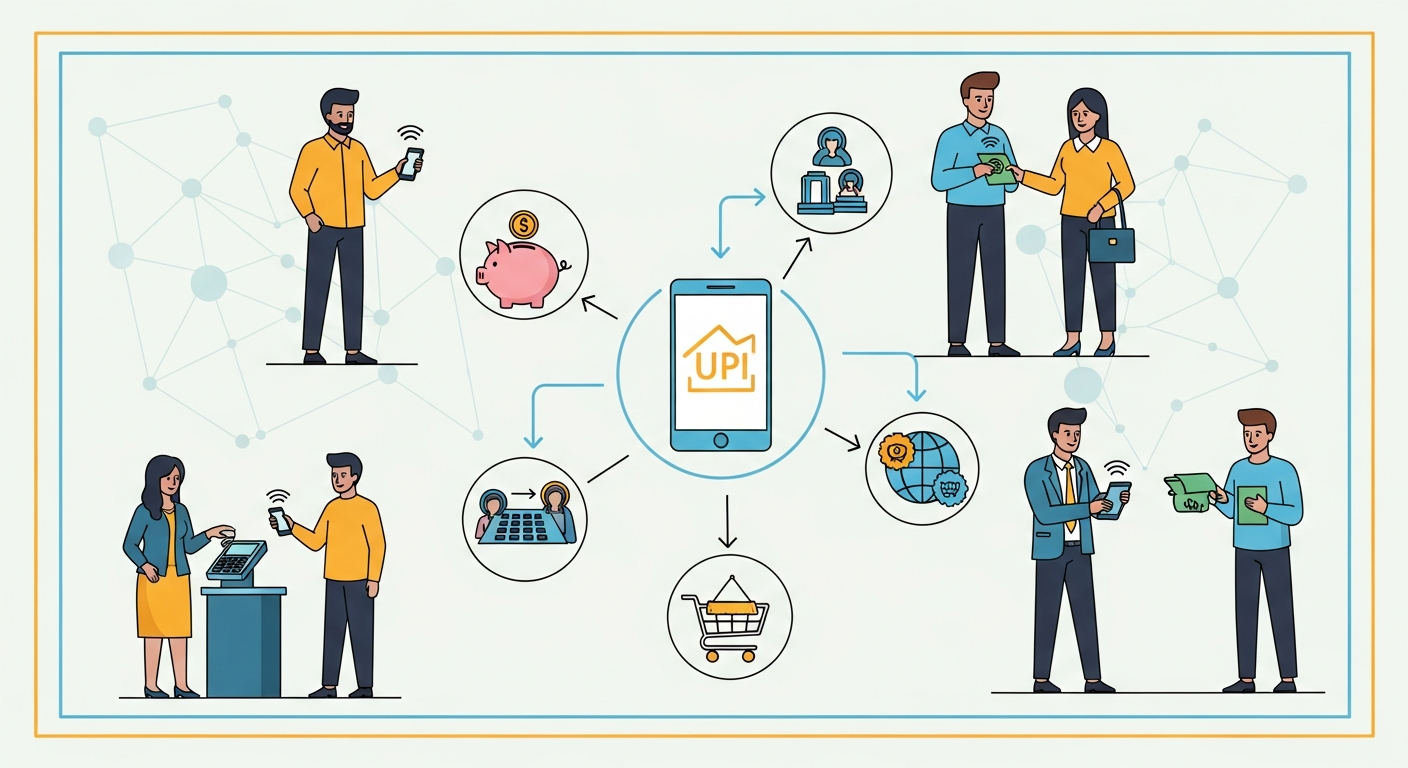Introduction to UPI
Definition of UPI
Unified Payments Interface, commonly known as UPI, is a digital payment system that allows you to transfer money directly between bank accounts using your smartphone. Launched in India in 2016, UPI has transformed how people handle their finances. It combines several banking features into a single mobile application, making transactions quick and easy.
Importance of UPI in Digital Payments
UPI has become a cornerstone of the digital payment landscape in India. It enables users to make payments instantly without needing cash or physical cards. This system has not only simplified transactions for individuals but has also encouraged businesses to adopt cashless payment methods. By bridging the gap between traditional banking and modern technology, UPI promotes financial inclusion and economic growth.
How UPI Works
Basic Features of UPI
UPI is designed with user-friendliness in mind. Here are some of its basic features:
- Instant Transfers: You can send or receive money instantly, 24/7.
- Multiple Bank Accounts: UPI allows you to link multiple bank accounts to a single app.
- Peer-to-Peer Payments: You can easily pay friends or family members with just a few taps.
- Scheduled Payments: UPI can be used to set up recurring payments for bills or subscriptions.
The UPI Process Explained
Using UPI is straightforward. Here’s how it typically works:
- Set Up Your UPI Account: Download a UPI-enabled app and link it to your bank account.
- Create a UPI ID: This unique identifier helps you send and receive money without sharing your bank details.
- Initiate a Transaction: Enter the recipient’s UPI ID, the amount you wish to send, and an optional message.
- Authentication: Confirm the transaction using your UPI PIN.
- Completion: Once authenticated, the money is transferred instantly, and both parties receive a notification.
Key Components of UPI
UPI ID and Its Significance
Your UPI ID is crucial in the UPI ecosystem. It acts as your digital identity for transactions, similar to an email address. This unique identifier allows you to send and receive money without disclosing sensitive banking information. It enhances security and simplifies the transaction process.
Role of Banks in UPI Transactions
Banks play a vital role in the UPI framework. They facilitate the transactions and ensure that the money is transferred seamlessly between accounts. When you make a payment through UPI, your bank verifies the transaction and ensures that funds are available. This process happens in real-time, contributing to UPI’s instant payment feature.
UPI Apps and Their Functions
Several apps support UPI transactions, each with unique features. Some popular ones include:
- Banking Apps: Most major banks offer UPI services through their mobile banking apps.
- Third-Party Apps: Independent apps like certain digital wallets and payment platforms also support UPI.
These apps allow you to manage your finances, view transaction history, and even pay bills, all from one place.
Benefits of Using UPI
Convenience and Accessibility
UPI is designed for convenience. You can make payments anytime, anywhere, as long as you have your smartphone. This accessibility makes it a preferred choice for many users.
Speed of Transactions
Speed is one of the most significant advantages of UPI. Unlike traditional banking methods that may take hours or days, UPI transactions are completed in seconds. This makes it ideal for both personal and business payments.
Security Measures in UPI
Security is a priority in UPI transactions. Each transaction requires a unique UPI PIN, adding an extra layer of protection. Additionally, the system uses encryption to safeguard your data, ensuring your financial information remains confidential.
UPI and Financial Inclusion
Impact on Small Businesses
UPI has been a game-changer for small businesses. It allows them to accept payments without investing in expensive infrastructure. With UPI, even the smallest vendors can go cashless, making it easier to track sales and manage finances.
UPI’s Role in Rural Areas
In rural areas where banking infrastructure may be limited, UPI provides a vital service. It enables people to participate in the digital economy, giving them access to financial services that were previously unavailable. This has led to greater economic development and improved living standards in these regions.
Common Challenges with UPI
Technical Issues
While UPI is generally reliable, users may occasionally face technical issues. These can include app crashes, server downtime, or connectivity problems. It’s essential to have a backup plan, such as alternative payment methods, in case of these disruptions.
User Awareness and Education
Despite its advantages, some users may be unaware of how to use UPI effectively. Education about the UPI system and its features is crucial to ensure that everyone can benefit from this technology. Initiatives to promote user awareness can help bridge this knowledge gap.
Future of UPI
Innovations and Developments
The future of UPI looks promising, with ongoing innovations aimed at enhancing user experience. Features like voice-assisted payments and integration with other financial services are on the horizon, making UPI even more versatile.
UPI in Global Context
While UPI is predominantly used in India, its success has inspired similar systems in other countries. As digital payments continue to evolve globally, UPI could serve as a model for other nations looking to improve their payment systems.
Conclusion
In conclusion, UPI is a significant advancement in the world of digital payments. Its user-friendly interface, rapid transaction speeds, and robust security measures make it an invaluable tool for individuals and businesses alike. By promoting financial inclusion and accessibility, UPI is paving the way for a more connected and cashless future. Embracing UPI can enhance your financial transactions and contribute to the broader growth of the economy.



